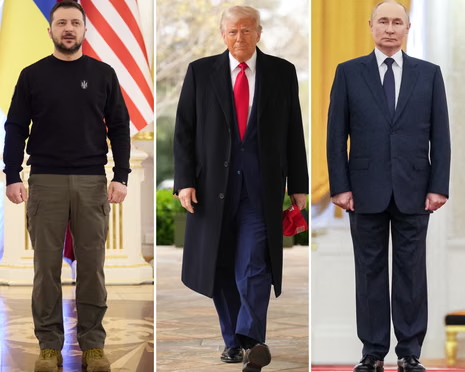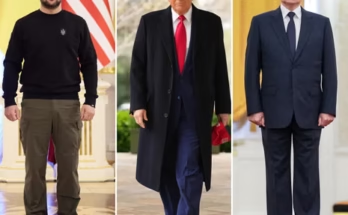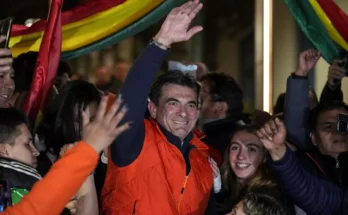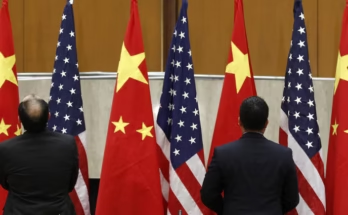The diplomatic spotlight is burning bright on a triangular saga involving Donald Trump, Vladimir Putin, and Volodymyr Zelenskyy. While the war in Ukraine grinds into its fourth year, global speculation is rising about a potential Trump-brokered peace deal—but President Putin has declared that the “conditions for a Zelenskyy meeting are nowhere near met.”
As Trump pushes a high-profile return to global diplomacy and Putin prepares for talks with key non-Western allies (including a visit to India), questions abound:
-
Is a Trump-mediated peace process realistic?
-
What does Putin want from Ukraine?
-
Can Zelenskyy afford to talk without concessions?
Let’s break down this complex diplomatic triangle.
What Did Putin Say — And Why Now?
In a press conference in Sochi, President Vladimir Putin made headlines with a cryptic but telling statement:
“We are open to dialogue, but the conditions for a productive meeting with President Zelenskyy are, at this stage, nowhere near met.”
Putin cited the following non-negotiable preconditions:
-
Ukrainian recognition of Russian control over Donetsk, Luhansk, Kherson, and Zaporizhzhia
-
Repeal of Ukraine’s 2022 NATO membership application
-
Legal protections for ethnic Russians in all disputed territories
-
Sanctions relief guarantees from the West
These demands are widely considered unacceptable to Kyiv and its Western allies, making direct talks a distant possibility.
Trump’s Peace Gambit
Former U.S. President Donald Trump, campaigning for a return to the White House, has inserted himself into the Ukraine diplomacy narrative, reportedly proposing:
-
Hosting a neutral summit in the UAE
-
Offering to mediate between Kyiv and Moscow
-
Pledging a 24-hour solution to “end the war” if re-elected
While Trump has provided no details, his America First, anti-war rhetoric resonates with portions of the U.S. and European populations exhausted by prolonged conflict and rising costs.
Whether symbolic or serious, Trump’s initiative is already reshaping diplomatic expectations.
Ukraine’s Position: Firm and Frustrated
President Volodymyr Zelenskyy has repeatedly said that Ukraine will not negotiate under pressure or with its territorial integrity compromised. His preconditions for talks include:
-
Full Russian troop withdrawal
-
Restoration of pre-2014 borders
-
Security guarantees from NATO or other international blocs
-
War crimes accountability for Russian actions
Zelenskyy’s domestic standing remains strong, but cracks are emerging:
-
War fatigue is rising among Ukrainian civilians
-
Military losses and resource shortages continue
-
Ukraine’s counteroffensive has stalled in key eastern sectors
With Western aid flowing more slowly, Ukraine faces diplomatic urgency—but limited options.
International Reaction: Strategic Caution
🇪🇺 European Union
EU leaders are cautiously optimistic about any potential de-escalation, but remain skeptical of Putin’s sincerity. Most European nations support Ukraine’s sovereignty and insist on a Ukrainian-led process.
🇨🇳 China
China has offered its own vague peace framework and may quietly support any outcome that reduces U.S. dominance in the region.
🇮🇳 India
As a neutral but powerful player, India may serve as a bridge between Moscow and the West. Putin’s upcoming visit to New Delhi could include quiet backchannel diplomacy.
🇺🇳 United Nations
The UN continues to call for humanitarian corridors, civilian protection, and a multilateral peace initiative involving global stakeholders.
What’s Really at Stake?
This isn’t just a three-way drama—it’s about geopolitical alignment and global influence. Here’s what each leader stands to gain or lose:
🟦 Trump
-
Boosts image as a global dealmaker
-
Distracts from domestic legal issues
-
Gains campaign leverage with peace-minded voters
🟥 Putin
-
Regains legitimacy on the world stage
-
Pushes to end war on favorable terms
-
Strengthens ties with non-Western allies
🟨 Zelenskyy
-
Maintains national sovereignty
-
Balances diplomacy with public morale
-
Keeps Western support intact
Any diplomatic breakthrough will redefine the post-Cold War order and potentially usher in a new security architecture in Europe.
Is a Summit Realistic?
While rumors of a UAE-hosted summit persist, the chances of real progress remain low—unless at least one side softens its conditions.
Analysts suggest several outcomes:
-
Photo-op diplomacy: A symbolic meeting with no real change
-
Backchannel negotiations: Secret talks to set terms in motion
-
Multilateral mediation: India, Turkey, or Brazil may step in
-
Escalation: If talks fail, fighting may intensify before any breakthrough
The Human Cost Continues
As leaders weigh diplomacy and posture publicly, millions remain caught in the crossfire:
-
Over 6 million Ukrainians are now refugees
-
Civilian casualties continue to mount
-
Infrastructure across Ukraine’s east and south is devastated
-
Food and energy prices remain high globally
This ongoing humanitarian crisis adds pressure on all sides to find common ground—or at least reduce civilian suffering.
Conclusion
The triangle between Trump, Putin, and Zelenskyy is more than a political sideshow—it’s a test of whether global diplomacy can still function in a fractured, multipolar world.
While the road to peace remains blocked by mutual mistrust, incompatible demands, and political posturing, the very act of floating talks shows that even the coldest wars may still end at the negotiating table.
But will egos and elections derail peace again? Only time will tell.
FAQs
Q1: Is Putin serious about meeting Zelenskyy?
He claims to be open to dialogue but has set preconditions that Ukraine considers unacceptable.
Q2: What is Trump’s role in all this?
Trump has proposed acting as a mediator and claims he could end the war quickly, although specifics are unclear.
Q3: Is a peace summit likely to happen?
Not imminently. Diplomatic groundwork is weak, and none of the parties are ready to compromise significantly.
Q4: What does Ukraine want from peace talks?
Full Russian withdrawal, security guarantees, and justice for war crimes.



